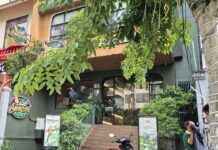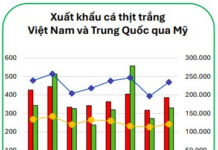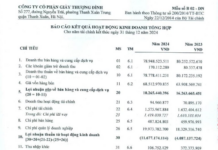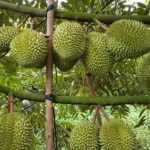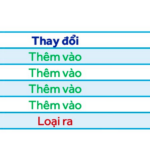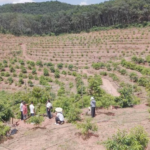According to the Import-Export Department of the Ministry of Industry and Trade, Vietnam’s fruit and vegetable exports reached an estimated $7.05 billion in the first 10 months of this year, marking a 14.6% increase compared to the same period last year.
Notably, alongside the traditional market of China, several other markets significantly boosted their imports of Vietnamese fruits and vegetables this year. Among these, the United States stands out as the most impressive market.
In the first 10 months, exports to the U.S. reached $454.5 million, a remarkable 58.3% increase year-on-year. This growth was not only substantial but also consistent month-by-month. In October alone, exports to the U.S. surged by 46.6% compared to the same month last year, reflecting strong demand for tropical fruits such as bananas, mangoes, pineapples, and frozen durian.
South Korea also made a significant impact, spending approximately $264.1 million on Vietnamese fruits and vegetables in the first 10 months, an 18.1% increase from the previous year. South Korean consumers particularly favor durian, mangoes, and coconuts. However, the more pronounced growth came from the processed product segment—pre-cut and canned fruits tailored for modern retail channels. This shift indicates a trend moving beyond raw agricultural exports toward higher value-added products.

Durian exports, after a slow start earlier this year, have seen a remarkable rebound in recent months.
Taiwan (China) witnessed a spectacular recovery. After a period of stringent import controls, this market has rebounded with great potential, achieving $148.2 million in exports over 10 months, a 12.1% increase year-on-year. Taiwan’s resurgence is closely tied to the growing consumer preference for healthy foods, with Vietnamese bananas, melons, and mangoes being favored for their quality and affordability. Hong Kong also saw a significant 54.5% increase.
Meanwhile, exports to the Netherlands in October surged by 31.8%, indicating rising demand for redistribution within the EU. Over the 10-month period, the Netherlands spent $135.7 million on Vietnamese fruits and vegetables, a 43.7% increase compared to the same period last year. Additionally, exports to the UK rose by 50.8%, Germany by 54.5%, and Australia by 29.6%, marking the highest growth rates for Vietnamese agricultural products.
Among emerging markets, the United Arab Emirates (UAE) stands out. In the first 10 months, the UAE imported $97.4 million worth of Vietnamese fruits and vegetables, a 51.8% increase. As Middle Eastern consumers increasingly shift toward fresh and premium foods, Vietnamese tropical fruits are perfectly aligned with market trends, opening up long-term opportunities.
The Ministry of Industry and Trade predicts that the growth momentum over the past 10 months has laid a solid foundation for Vietnam’s fruit and vegetable sector to achieve its target of $8.5 billion for the full year.
Vietnam Among Emerging Markets Resilient to US Tariffs
A recent study by risk consultancy Verisk Maplecroft reveals that major emerging economies, including China, Brazil, and India, are well-positioned to weather U.S. tariff pressures with relative ease.















